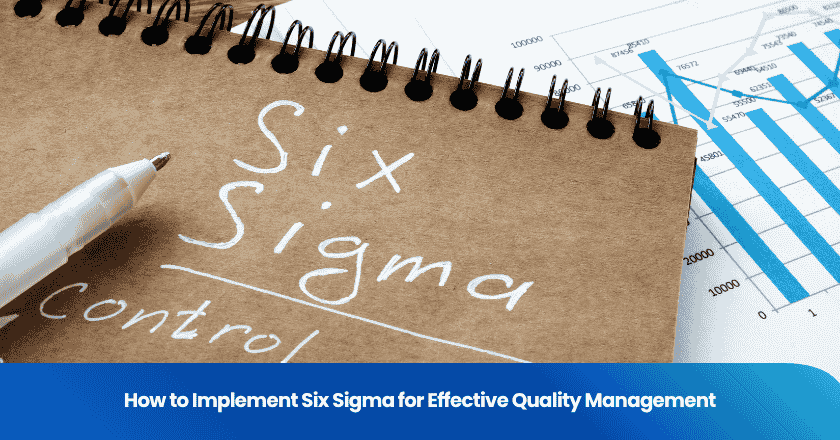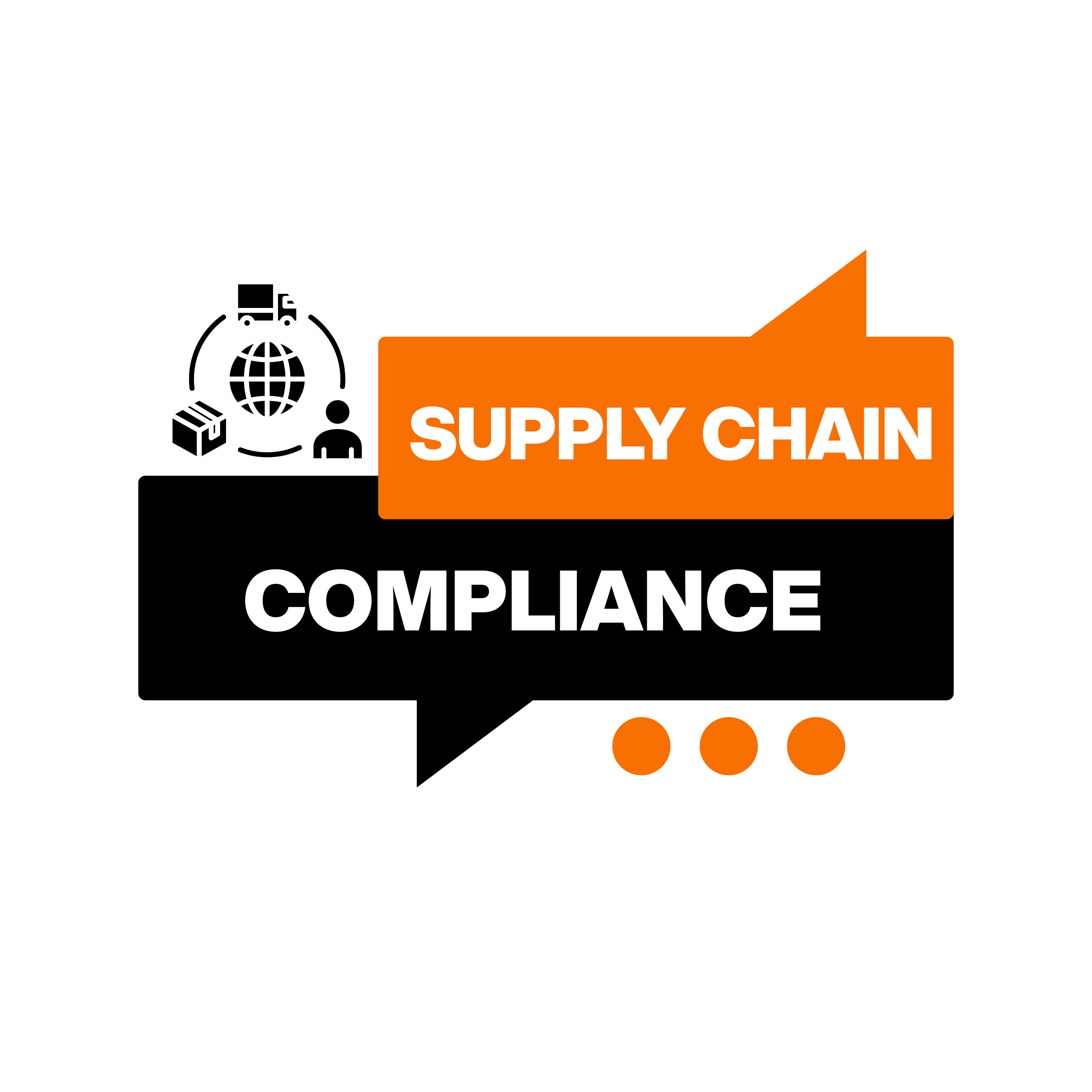
You can implement six sigma to achieve superior quality management by focusing on data-driven process optimization. Six sigma and quality management work together to reduce errors and improve efficiency. Many organizations report measurable gains after adopting six sigma, such as financial savings and better customer satisfaction.
You see lower defect rates and optimized workflows. The dmaic framework forms the core of six sigma implementation. Lean six sigma supports integration with existing quality systems and adapts to different industries.
Key Takeaways
- Implement Six Sigma to reduce errors and improve efficiency in your organization.
- Use the DMAIC framework to define problems, measure performance, analyze data, improve processes, and control outcomes.
- Engage employees in continuous improvement efforts to foster a culture of quality and accountability.
- Align Six Sigma with existing quality management systems like TQM and ISO 9001 for enhanced effectiveness.
- Regularly measure success through key performance indicators to ensure ongoing quality improvements.
Six Sigma and Quality Management
What Is Six Sigma?
You encounter six sigma as a powerful quality management methodology. Six sigma and quality management focus on reducing errors and improving consistency. You use six sigma to identify and eliminate defects in processes, products, or services. The main goal is to streamline quality control and minimize variance. Six sigma originated in manufacturing, but you now see it applied across many industries.
- Six sigma and quality management rely on data-driven decision-making and process improvement.
- You follow two main strategies: DMAIC for improving existing processes and DMADV for creating new ones.
- Six sigma aims to reduce defects and drive operational excellence in any sector.
Six sigma was first trademarked in 1993. The term refers to a statistical measure, meaning your process can achieve 99.99966% defect-free results. Today, you find six sigma and quality management practices in technology, finance, and healthcare.
| Principle | Description |
|---|---|
| Focus on the Customer | You understand customer needs and work to enhance satisfaction and loyalty. |
| Data-Driven Decision Making | You base decisions on facts and data analysis for reliable solutions. |
| Eliminate Variability | You identify and reduce process variability to ensure higher quality and fewer defects. |
| Continuous Improvement | You strive for ongoing improvements and adaptability. |
| Flexible and Responsive System | You adapt six sigma and quality management to meet changing customer or market needs. |
Six Sigma in Quality Management
You use six sigma and quality management to move from a reactive approach to a proactive one. Instead of catching mistakes at the end, you prevent defects from happening. You apply the DMAIC roadmap to work smarter and achieve better quality.
You see six sigma certification as a mark of expertise in quality management. Six sigma certification shows you have mastered the tools and techniques to improve quality and efficiency. You use six sigma certification to lead projects that reduce defects and optimize processes.
You also benefit from lean six sigma, which combines lean's focus on waste elimination with six sigma’s emphasis on reducing defects. Lean six sigma helps you enhance efficiency, minimize waste, improve quality, and shorten cycle times. You achieve cost reductions and deliver better results for your organization.
Six sigma certification supports your journey toward operational excellence. You build a culture of quality and continuous improvement. You ensure quality control by using data, standardizing improvements, and monitoring defect rates.
You find six sigma and quality management essential for any organization that values quality, efficiency, and customer satisfaction.
DMAIC Implementation Steps
The DMAIC framework guides you through a structured approach to six sigma and quality management. You use DMAIC to drive process improvement, eliminate defects, and achieve lasting results. Each phase—Define, Measure, Analyze, Improve, and Control—offers specific tools and actionable steps.
Define
You start the six sigma journey by clearly defining the problem and setting the direction for your project. In this phase, you focus on understanding the issue, aligning goals, and establishing boundaries. You use tools like SIPOC diagrams, Project Charters, and Voice of the Customer analysis to ensure clarity and alignment.
| Objective | Description |
|---|---|
| Clearly define the problem | Establish a focused problem statement to guide the project. |
| Set SMART goals | Create specific, measurable, achievable, relevant, and time-bound objectives linked to KPIs. |
| Understand Voice of the Customer | Conduct stakeholder analysis to identify customer needs and expectations. |
| Define project scope | Use tools like SIPOC diagrams to outline project boundaries and ensure alignment with sponsors. |
You take these steps to lay a strong foundation for process improvement:
- Understand the problem to be solved.
- Determine project scope and boundaries.
- Identify metrics to quantify the problem.
- Develop a Project Charter to formalize the project.
- Gain approval from leadership.
For example, if you want to improve product delivery times, you define the current delays, set a goal to reduce cycle time by 20%, and clarify which departments are involved. You collect customer feedback to ensure your objectives align with their expectations.
Common tools you use in the Define phase:
- SIPOC Diagram: Maps Suppliers, Inputs, Process, Outputs, and Customers.
- Project Charter: Outlines scope, objectives, timelines, and roles.
- Voice of the Customer (VoC): Gathers customer feedback for quality alignment.
Measure
You move to the Measure phase to collect data and establish baseline performance. Accurate measurement is essential for six sigma success and quality assurance. You select metrics that reflect timeliness, product quality, service quality, cost, and customer satisfaction.
- Timeliness: Throughput, cycle time, delivery dates.
- Product Quality: Defect rates, rework volume, reliability.
- Service Quality: Responsiveness, trustworthiness, service reliability.
- Cost: Labor, materials, overhead, cost of rework.
- Customer Satisfaction: Metrics that show how well you meet expectations.
To ensure data accuracy, you apply several methods:
| Method | Description |
|---|---|
| Statistical Sampling | Random sampling of 5-10% of records |
| Cross-verification | Verification against original documents |
| Automated Validation Rules | Rules to check data entry accuracy |
| Regular Accuracy Audits | Periodic audits to ensure data quality |
| Clear Data Entry Protocols | Guidelines for data entry |
| Staff Training | Training sessions on data accuracy |
| Periodic Data Accuracy Audits | Audits to maintain data integrity |
Suppose you want to improve customer service response times. You measure current response rates, defect rates in service delivery, and customer satisfaction scores. You audit your data regularly to maintain high quality standards.
Analyze
You analyze the data to uncover root causes of problems and identify opportunities for improvement. You use statistical analysis techniques to understand relationships and variations in your process.
You also use root cause analysis tools:
- 5 Whys: Ask "why" repeatedly to find the underlying cause.
- Cause-and-Effect (Fishbone) Diagram: Organize potential causes into categories.
- Failure Modes and Effects Analysis (FMEA): Identify potential failures and their impacts.
For example, if you discover high defect rates in a manufacturing process, you use regression analysis to link defects to specific machine settings. You apply the 5 Whys to trace the issue back to a lack of preventive maintenance.
Improve
You develop and implement solutions to address the root causes identified in the Analyze phase. You focus on improvement strategies that deliver measurable gains in quality and process improvement.
You validate improvements through a structured process:
| Step | Description |
|---|---|
| 1 | Pilot potential improvements on a small scale, defining scope, metrics, resources, and success measures. |
| 2 | Execute the pilot while monitoring its impact using defined metrics, identifying gaps between expected and actual results. |
| 3 | Roll out the validated solution organization-wide, ensuring smooth adoption through change management, updated documentation, and training. |
| 4 | Continue monitoring to ensure sustained gains, instituting controls to prevent backsliding. |
| 5 | Quantify cost savings, increased productivity, or other benefits to showcase the value of improvements. |
Suppose you want to improve product reliability. You pilot a new inspection process, monitor defect rates, and train staff on new procedures. You expand the solution after confirming sustained improvement.
Tip: Engage your team in Kaizen activities to encourage continuous improvement and foster a culture of quality.
Control
You establish controls to sustain the improvements and maintain high quality standards. You use control mechanisms to monitor process performance and prevent regression.
You monitor ongoing process performance using clear strategies:
| Aspect | Description |
|---|---|
| Purpose | Maintain improvements made in earlier phases of the DMAIC process. |
| Monitoring Strategy | Continuous monitoring of process performance. |
| Responsibilities | Assign responsibility for overseeing controls. |
| Corrective Actions | Take action if KPIs fall outside desired ranges. |
For example, you implement SPC charts to track defect rates in production. You schedule preventive maintenance and automate quality checks to ensure consistent output. You assign team members to monitor KPIs and take corrective action when needed.
Note: Sustaining six sigma improvements requires ongoing vigilance and a commitment to quality. You build a culture where process improvement and defect reduction become part of daily operations.

Integrating Six Sigma with Quality Management Methodology
Aligning with Existing Systems
You can strengthen your quality management methodology by aligning six sigma with established systems like Total Quality Management (TQM) and ISO 9001. TQM encourages a culture where everyone takes responsibility for quality. When you combine TQM with six sigma, you create a powerful approach that reduces defects and involves employees at every level. For example, you might use lean six sigma to cut waste while maintaining high quality standards. This approach helps you build a workplace where quality improvement becomes a shared goal.
ISO 9001 sets the foundation for quality management methodology by defining clear quality standards. Six sigma gives you the analytical tools to improve processes within those standards. When you integrate six sigma with ISO 9001, you support a culture of continuous improvement and ensure your processes meet international quality standards. This combination helps you simplify operations, improve customer experience, and achieve operational excellence.
Tip: Start by assessing your current quality management methodology. Use six sigma tools to identify gaps and set measurable goals for improvement.
You may face challenges when aligning six sigma with existing systems. Common issues include resistance from employees, misalignment with organizational goals, and difficulties in collecting accurate data. Sustaining improvements and embedding six sigma into your culture also require ongoing effort.
To overcome these challenges, you should involve cross-functional teams, start with data-driven insights, pilot changes before full implementation, and focus on change management. Setting clear metrics and leveraging technology for automation will help you maintain high quality standards.
Adapting to Different Industries
You can adapt six sigma and lean six sigma to fit any industry or business size. In healthcare, you might use six sigma to reduce medical errors and improve patient care. For example, hospitals have applied lean six sigma to streamline care pathways and reduce wait times, leading to better quality outcomes. In manufacturing, you use six sigma to cut lead times and lower costs, ensuring your products meet strict quality standards. Service industries also benefit by improving efficiency and consistency, such as optimizing back-office processes or enhancing baggage handling.
Small and medium-sized enterprises also see strong results from six sigma. You can achieve waste reduction, cycle time improvements, and higher productivity. Six sigma helps you lower defect rates, improve process consistency, and boost employee engagement. By focusing on quality standards, you enhance customer satisfaction and increase profitability.
Note: No matter your industry, you can use six sigma to meet quality standards, drive continuous improvement, and deliver better results for your customers.
Sustaining Quality Improvement
Continuous Improvement
You sustain quality improvement by building a culture that values ongoing progress. Strong leadership drives this culture, modeling behaviors that encourage everyone to contribute ideas and learn from mistakes. You empower employees to take ownership of quality, making them active participants in every quality assurance project plan. Leaders provide resources, training, and time for staff to engage in improvement activities. Open communication ensures that everyone understands the goals and feels valued.
You use proven continuous improvement models to support six sigma initiatives:
- Lean focuses on eliminating waste and improving flow, which complements six sigma’s defect reduction.
- PDCA Cycle encourages you to plan, do, check, and act, aligning with six sigma’s data-driven approach.
- Motorola, General Electric, Bank of America, and 3M have all demonstrated the effectiveness of six sigma in driving quality and efficiency.
You integrate these models into your quality assurance project plan to maintain momentum. Structured processes and regular feedback help you adapt quickly and keep quality at the forefront.
Tip: Leadership commitment is essential. When leaders actively support six sigma and quality, you see greater employee engagement and sustained improvement.
Measuring Success
You measure success by tracking key performance indicators that reflect the impact of six sigma on quality. A quality assurance project plan includes clear metrics to evaluate progress and guide future actions. You monitor customer satisfaction, business value, team morale, long-term sustainability, and innovation.
You celebrate achievements to reinforce a culture of quality. Simple recognition, such as team lunches or custom swag, motivates your team. Public acknowledgment through newsletters, town halls, or a 'Wall of Wins' inspires others to pursue six sigma excellence. You host award ceremonies and feature teams in success spotlights to highlight both outcomes and efforts. These actions align with six sigma principles and make quality improvement visible and valued.
Note: Recognizing both the results and the hard work behind every quality assurance project plan strengthens your commitment to six sigma and quality.
You achieve lasting results in quality management by following a structured six sigma approach. Begin with small six sigma projects to build momentum and confidence. Regular reviews and team engagement help you maintain quality improvements. You empower your team to drive six sigma initiatives and foster a culture of quality. Leaders set a clear vision for six sigma and promote problem-solving. You establish measurable goals to track quality progress and ensure six sigma improvements remain data-driven. Open feedback loops and recognition boost team engagement and well-being. You use real-time monitoring and predictive tools to adapt six sigma strategies for evolving quality needs. Continuous improvement and robust measurement systems keep six sigma projects effective in complex environments.
- Leadership and culture drive six sigma success in quality management.
- Employee involvement and recognition sustain quality improvements.
- Measurable goals and feedback loops support six sigma progress.
- Ongoing measurement and adaptation maximize quality outcomes.
- Industry 4.0 technologies enhance six sigma responsiveness and quality control.
- Real-time process monitoring strengthens six sigma quality management.
- Continuous improvement is vital for six sigma in dynamic business settings.
- Robust measurement systems ensure six sigma delivers quality value.
- Integration of six sigma should be ongoing for quality excellence.
- Small six sigma projects help you build a foundation for quality improvement.
FAQ
What is the main goal of Six Sigma in quality management?
You use six sigma to reduce defects and improve quality. This method helps you create a strong quality assurance plan. You focus on data and process improvement to achieve consistent quality results.
How does a quality assurance plan support continuous improvement?
A quality assurance plan gives you a road map for maintaining quality. You set clear standards and monitor progress. This plan helps you identify gaps and make changes that improve quality over time.
Why is employee involvement important in a quality assurance plan?
You need everyone to support your quality assurance plan. When employees take part, you see better quality results. Their feedback helps you find problems and create solutions that strengthen your quality assurance plan.
How do you measure the success of a quality assurance plan?
You track key metrics like defect rates, customer satisfaction, and process stability. These measures show if your quality assurance plan works. You use this data to adjust your plan and keep improving quality.
Can Six Sigma work with other quality assurance methods?
You can combine six sigma with your quality assurance plan. This approach lets you use data-driven tools and proven quality assurance methods together. You create a stronger system for quality and assurance.
Grow your business with TradeAider Service
Click the button below to directly enter the TradeAider Service System. The simple steps from booking and payment to receiving reports are easy to operate.




